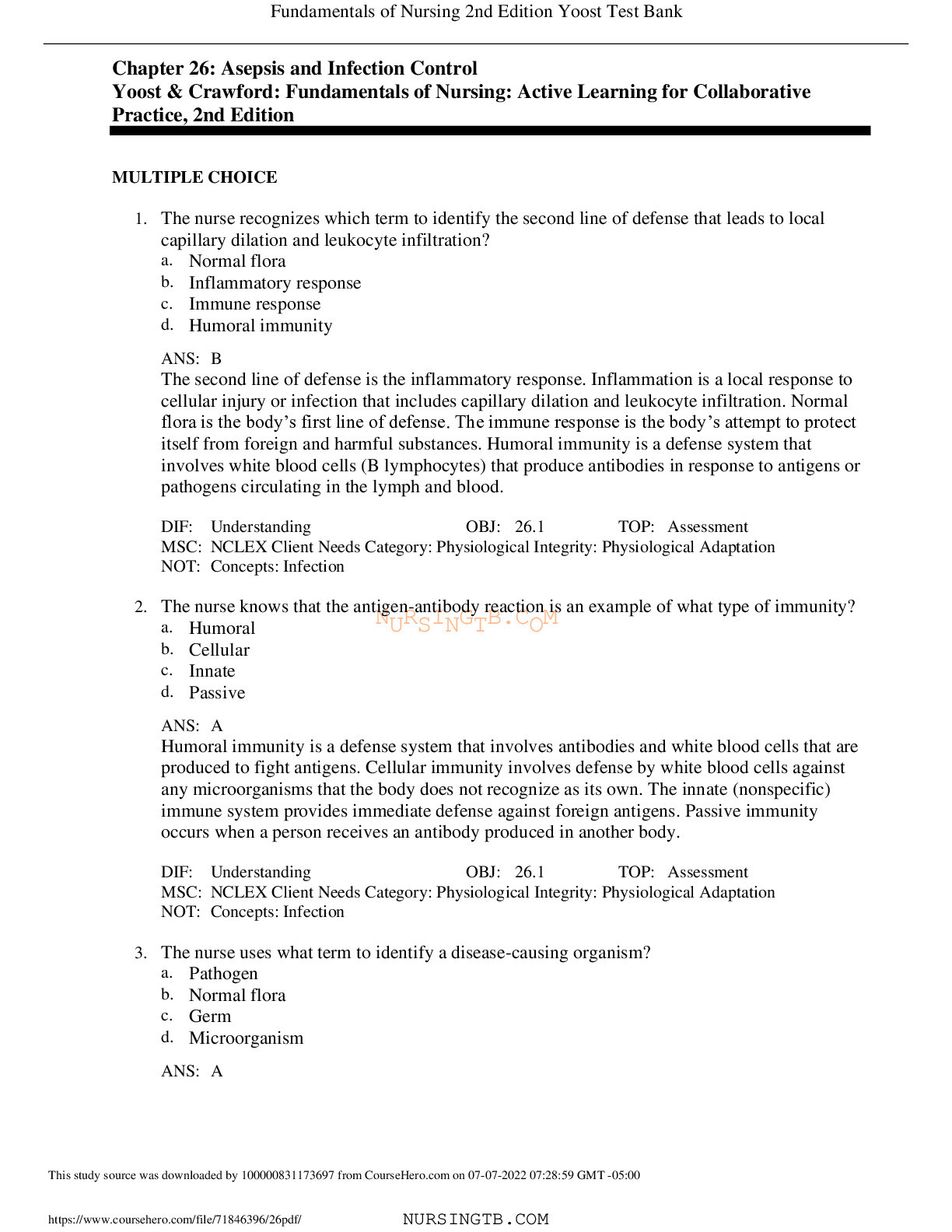All study resources > Chapter 26: Asepsis and Infection Control Yoost & Crawford: Fundamentals of Nursing: Active Learning for Collaborative Practice, 2nd Edition (Nursing)
Chapter 26: Asepsis and Infection Control Yoost & Crawford: Fundamentals of Nursing: Active Learning for Collaborative Practice, 2nd Edition
1. The nurse recognizes which term to identify the second line of defense that leads to local
capillary dilation and leukocyte infiltration?
a. Normal flora
b. Inflammatory response
c. Immune response
d. Humoral immunity
2. The nurse knows that the antigen-antibody reaction is an example of what type of immunity?
a. Humoral
b. Cellular
c. Innate
d. Passive
3. The nurse uses what
...[Show More]
1. The nurse recognizes which term to identify the second line of defense that leads to local
capillary dilation and leukocyte infiltration?
a. Normal flora
b. Inflammatory response
c. Immune response
d. Humoral immunity
2. The nurse knows that the antigen-antibody reaction is an example of what type of immunity?
a. Humoral
b. Cellular
c. Innate
d. Passive
3. The nurse uses what term to identify a disease-causing organism?
a. Pathogen
b. Normal flora
c. Germ
d. Microorganism
4. The nurse is explaining to the patient why antibiotics are being administered. The answer
would be correct if the nurse stated antibiotics are effective against which microorganism?
a. Viruses
b. Fungi
c. Parasites
d. Bacteria
5. The nurse anticipates correctly that what medication category would be ordered to treat
athlete’s foot?
a. Antiviral
b. Antibiotic
c. Antihelminth
d. Antifungal
6. The nurse recognizes that the stethoscope most correctly represents which possible link in the
chain of infection?
a. Source
b. Portal of exit
c. Portal of entry
d. Mode of transmission
[Show Less]
